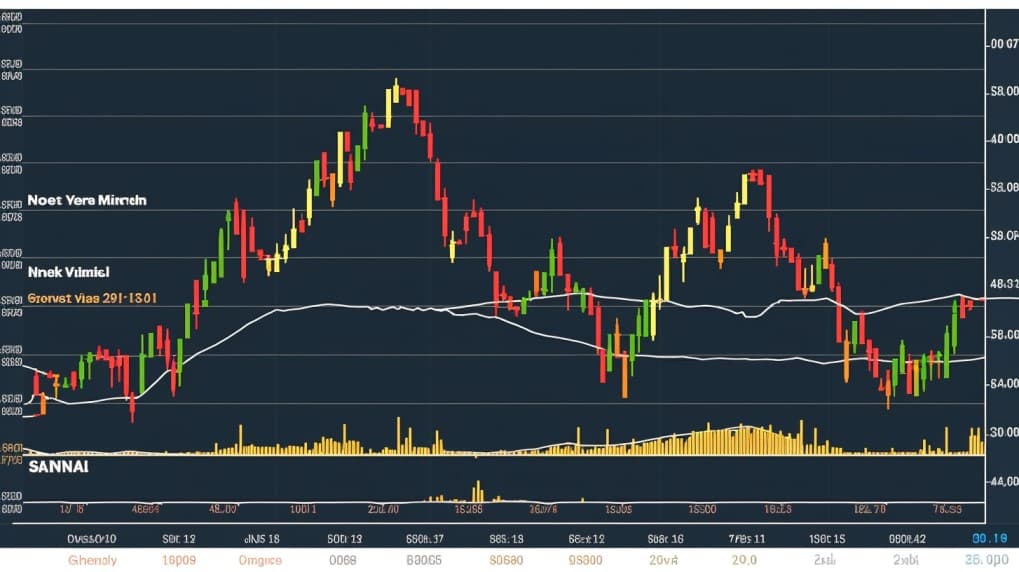
What are the best Insurance ETFs to invest in the United States?
Discover the top-performing Insurance Exchange-Traded Funds (ETFs) available in the United States. This article presents a comprehensive overview of the best Insurance ETFs, highlighting their performance, holdings, and key factors to consider when investing in this sector. Whether you are a seasoned investor or exploring new opportunities, this guide will help you make informed decisions regarding insurance ETF investments in the US market.
Understanding Insurance ETFs
Insurance exchange-traded funds (ETFs) provide investors with an opportunity to gain exposure to the insurance industry. These ETFs typically consist of a diversified portfolio of insurance company stocks, allowing investors to participate in the potential growth and profitability of the insurance sector. Insurance ETFs can be an attractive investment option for those seeking exposure to the insurance industry without investing in individual insurance company stocks.
One notable insurance ETF is the SPDR S&P Insurance ETF (KIE). KIE seeks to provide investment results that correspond to the performance of the S&P Insurance Select Industry Index. This ETF includes holdings in various insurance companies, providing broad exposure to the insurance sector.
Comparing SPDR S&P Insurance ETF (KIE) with Other Insurance ETFs
When considering insurance ETFs, it's important to compare them with similar options in the market. Here are a few notable insurance ETFs and a comparison with the SPDR S&P Insurance ETF (KIE):
iShares U.S. Insurance ETF (IAK): This ETF seeks to track the investment results of an index composed of U.S. equities in the insurance sector. While both IAK and KIE provide exposure to the insurance industry, their underlying holdings may differ, leading to variations in performance.
Invesco KBW Property & Casualty Insurance ETF (KBWP): KBWP focuses specifically on property and casualty insurance companies. Investors interested in a more targeted exposure to this specific segment of the insurance industry may consider this ETF alongside KIE.
Invesco KBW Insurance ETF (KBWI): KBWI is designed to track the performance of companies engaged in the business of providing insurance and reinsurance products. This ETF offers exposure to a broader range of insurance companies, complementing the coverage provided by KIE.
It's essential for investors to conduct thorough research and consider factors such as expense ratios, performance history, and underlying holdings before making investment decisions.
 IAK overlap What are the best Insurance ETFs to invest in the United States?
IAK overlap What are the best Insurance ETFs to invest in the United States?
What to Consider When Investing in Insurance ETFs
- Industry Trends: Understanding the overall trends and dynamics of the insurance industry can help investors make informed decisions. Factors such as interest rates, regulatory changes, and economic conditions can significantly impact insurance companies and, consequently, insurance ETFs.
Diversification: Assessing the diversification of an insurance ETF's holdings is crucial. A well-diversified ETF can help mitigate risks associated with individual companies or subsectors within the insurance industry.
Expense Ratios: Consider the expense ratio of an ETF, which represents the annual fee charged by the ETF issuer. Lower expense ratios can contribute to higher overall returns.
Performance History: Analyze the historical performance of insurance ETFs to evaluate their consistency and potential for growth. Past performance is not indicative of future results, but it can provide valuable insights.
Choosing the Right Insurance ETF
Selecting the best insurance ETF depends on your investment goals, risk tolerance, and overall portfolio strategy. It's essential to conduct thorough research, assess the ETF's expense ratios, performance history, and underlying holdings, and consider your investment horizon before making a decision.
When comparing insurance ETFs, the SPDR S&P Insurance ETF (KIE) stands out as a notable option due to its broad exposure to the insurance industry. However, each investor's circumstances are unique, and it's crucial to consider individual preferences and objectives when making investment choices.
Conclusion
Insurance ETFs provide a convenient way for investors to gain exposure to the insurance industry. The SPDR S&P Insurance ETF (KIE) is one such ETF that offers broad coverage of the insurance sector. When investing in insurance ETFs, it is important to carefully evaluate factors such as industry trends, diversification, expense ratios, and performance history. By conducting thorough research and understanding individual investment goals, investors can make informed decisions when selecting the best insurance ETF for their portfolio.
Disclaimer: This article is for informational purposes only and does not constitute financial advice. It is not providing any investment advisory services. Before making any investment decisions, please consult with a qualified financial advisor.
Sources:
Get startedFAQ
What are insurance ETFs?
Insurance ETFs are exchange-traded funds that focus on investing in companies within the insurance industry. These ETFs typically hold a diversified portfolio of insurance companies, including property and casualty insurers, life insurers, reinsurance companies, and insurance brokers.
What factors should I consider when choosing insurance ETFs?
When selecting insurance ETFs, you may consider factors such as the ETF's expense ratio, assets under management, historical performance, diversification across insurance subsectors, underlying index methodology, and the ETF issuer's reputation.
What are some popular insurance ETFs available in the United States?
Some popular insurance ETFs in the United States include the SPDR S&P Insurance ETF (KIE), iShares U.S. Insurance ETF (IAK), Invesco KBW Property & Casualty Insurance ETF (KBWP), and First Trust Nasdaq Insurance ETF (FTXO).
What is the investment strategy of insurance ETFs?
Insurance ETFs generally aim to track the performance of a specific index composed of insurance companies. The index methodology may include factors such as market capitalization, liquidity, and other criteria to select and weight the included companies.
What are the potential advantages of investing in insurance ETFs?
Investing in insurance ETFs allows for diversification across multiple companies within the insurance industry, reducing the risk associated with investing in individual stocks. Additionally, insurance ETFs provide exposure to a sector that can benefit from economic growth, rising insurance premiums, and increased demand for insurance products.